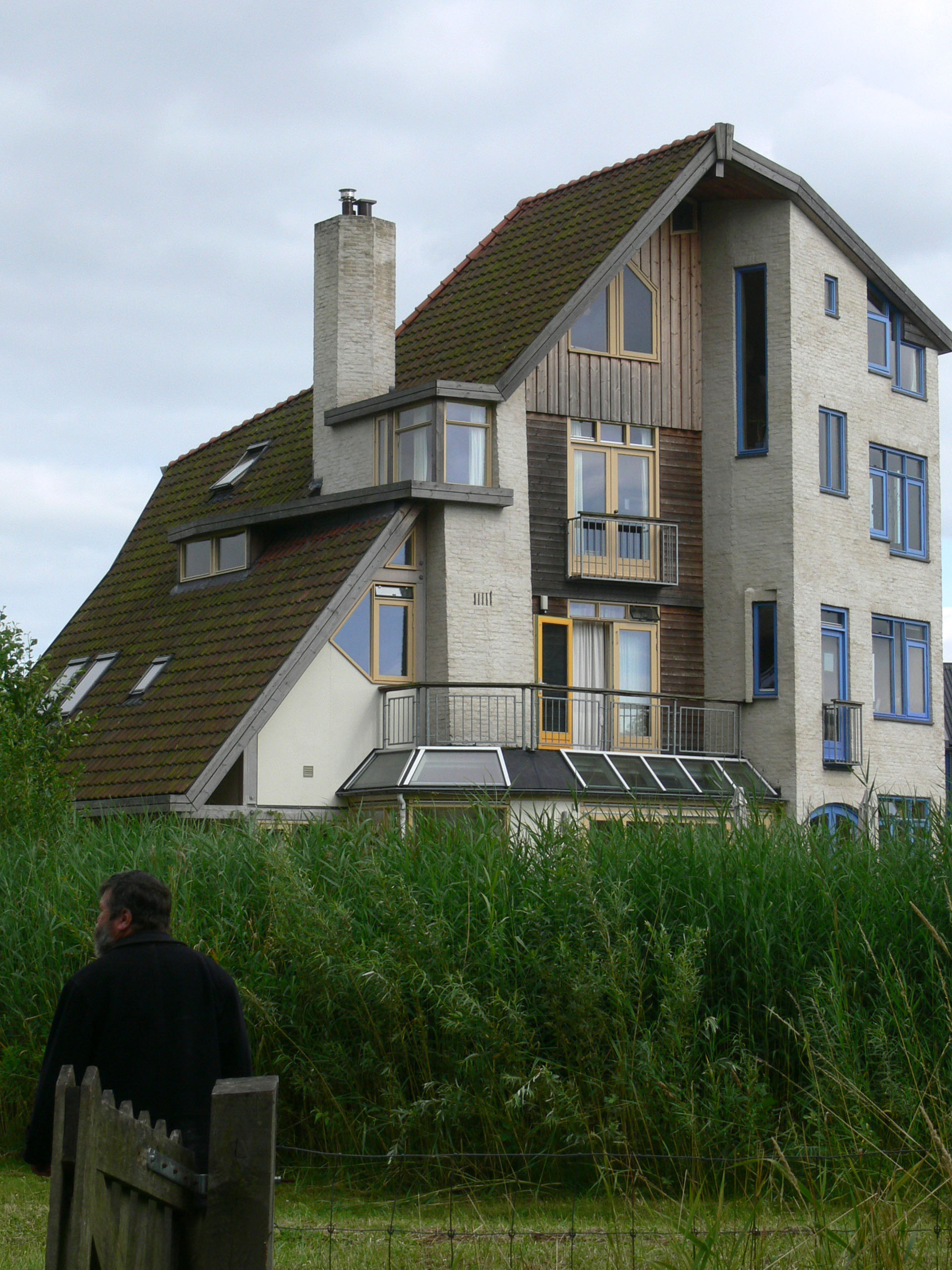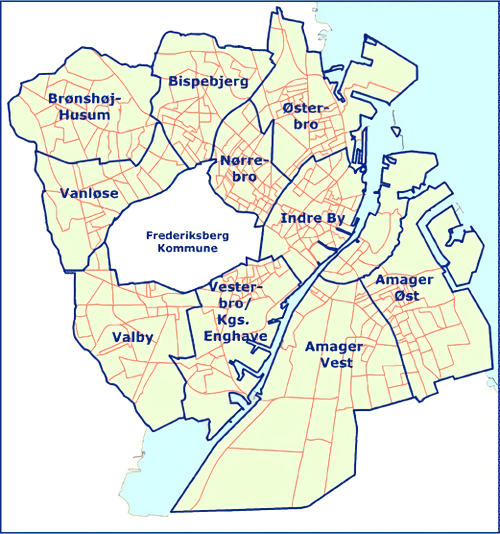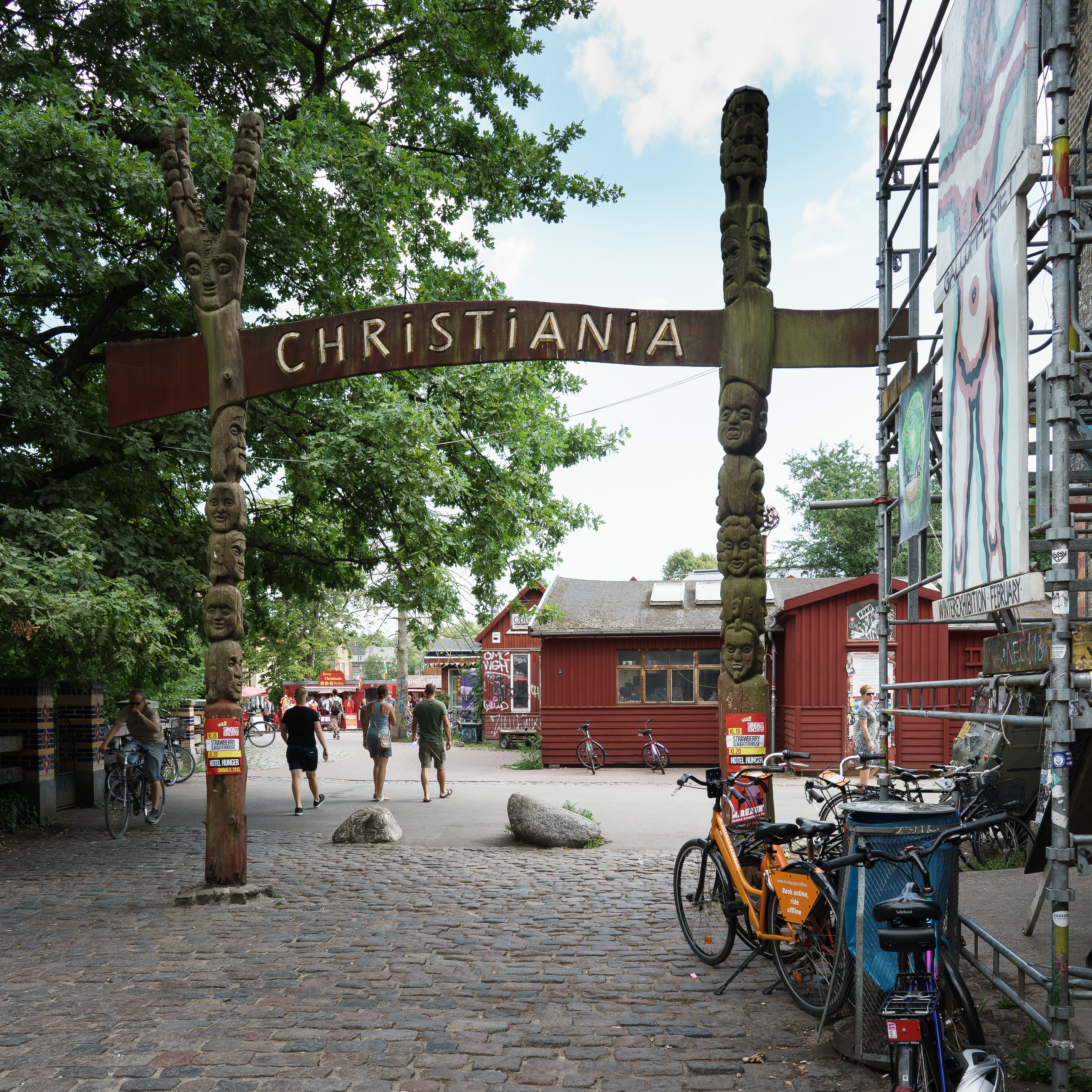|
Nokken, Copenhagen
Nokken is a self-built community located on the north-west coast of Amager, just south of Islands Brygge, in Copenhagen, Denmark. History Islands Brygge was created on reclaimed land in the years between 1900 and 1905. The southern part of the area was owned by the Port Authority and used for port-related industry. Nokken was founded in the 1930s when permission was given to use an undeveloped area for fishing. The first sheds and cabins were constructed, and over the years the community continued to grow. Ownership of the area was ceded to Copenhagen Municipality when heavy industry disappeared from Islands Brygge towards the end of the century. When plans were being drafted for the redevelopment of the former industrial areas at Islands Brygge, Nokken's residents feared that it would threaten the existence of their community. Negotiations with the municipal authorities finally gave Nokken status as an allotment (''kolonihaveforening''). The area is currently regulated by ... [...More Info...] [...Related Items...] OR: [Wikipedia] [Google] [Baidu] |
Self-build
Self-build is the creation of an individual home for oneself through a variety of methods. The self-builder's input into this process varies from doing the actual construction to contracting the work to an architect or building package company. Motivation People build individual homes for many reasons. One common reason, especially in poorer countries, is that they may not be able to afford such housing on the open market. Another motivation can be the wish to create something tailored to their family's requirements and/or lifestyle. Methods Self-builders create their homes through a variety of methods, and seldom build it entirely themselves. In rich countries, many of them hire an architect to design the home, and a builder to construct it. Others use so-called 'package' companies to handle the entire project. Many others find themselves managing building sites and dealing directly with planners, tradespeople and materials suppliers. Extent Self-build in its wider meaning ... [...More Info...] [...Related Items...] OR: [Wikipedia] [Google] [Baidu] |
Amager
Amager ( or, especially among older speakers, ) in the Øresund is Denmark's most densely populated island, with more than 212,000 inhabitants (January 2021) a small appendage to Zealand. The protected natural area of ''Naturpark Amager'' (including Kalvebod Fælled) makes up more than one-third of the island's total area of 96 km2. The Danish capital, Copenhagen Municipality, is partly situated on Amager, covering the northern part of the island, which is connected to the much larger island of Zealand by eight bridges and a metro tunnel. Amager also has a connection across the Øresund to Sweden, the Øresund Bridge. Its western part begins with a tunnel from Amager to another Danish island, Peberholm. Copenhagen Airport is located on the island, around from Copenhagen city centre. Amager is the largest island in the Øresund, and the only one with a large population. , 212,661 people lived on the island, including its northern tip, Christianshavn. The northern part is in ... [...More Info...] [...Related Items...] OR: [Wikipedia] [Google] [Baidu] |
Islands Brygge
Islands Brygge (English: Iceland's Quay) is a harbourfront area in central Copenhagen, Denmark, located on the north-western coast of Amager. The neighbourhood is noted for its waterfront park Havneparken, which is one of the most popular areas along the Copenhagen harbourfront and the location of one of the Copenhagen Harbour Baths. Established through a series of land reclamations from the 1880s, it served both military, residential, industrial and dockland purposes. In the mid-20th century it developed an infamous reputation as a neglected industrial and dockland area, but since 2000 it has undergone massive redevelopment and has become a fashionable and attractive neighbourhood. It is characterized by a mixture of old buildings and modern architecture, with a number of old structures relating to the area's dockland past preserved and converted into new functions. Geography Islands Brygge has an area of roughly 1 km² and a population of 12,147 (2009), though it has ne ... [...More Info...] [...Related Items...] OR: [Wikipedia] [Google] [Baidu] |
Copenhagen
Copenhagen ( or .; da, København ) is the capital and most populous city of Denmark, with a proper population of around 815.000 in the last quarter of 2022; and some 1.370,000 in the urban area; and the wider Copenhagen metropolitan area has 2,057,142 people. Copenhagen is on the islands of Zealand and Amager, separated from Malmö, Sweden, by the Øresund strait. The Øresund Bridge connects the two cities by rail and road. Originally a Viking fishing village established in the 10th century in the vicinity of what is now Gammel Strand, Copenhagen became the capital of Denmark in the early 15th century. Beginning in the 17th century, it consolidated its position as a regional centre of power with its institutions, defences, and armed forces. During the Renaissance the city served as the de facto capital of the Kalmar Union, being the seat of monarchy, governing the majority of the present day Nordic region in a personal union with Sweden and Norway ruled by the Danis ... [...More Info...] [...Related Items...] OR: [Wikipedia] [Google] [Baidu] |
Denmark
) , song = ( en, "King Christian stood by the lofty mast") , song_type = National and royal anthem , image_map = EU-Denmark.svg , map_caption = , subdivision_type = Sovereign state , subdivision_name = Danish Realm, Kingdom of Denmark , established_title = History of Denmark#Middle ages, Consolidation , established_date = 8th century , established_title2 = Christianization , established_date2 = 965 , established_title3 = , established_date3 = 5 June 1849 , established_title4 = Faroese home rule , established_date4 = 24 March 1948 , established_title5 = European Economic Community, EEC 1973 enlargement of the European Communities, accession , established_date5 = 1 January 1973 , established_title6 = Greenlandic home rule , established_date6 = 1 May 1979 , official_languages = Danish language, Danish , languages_type = Regional languages , languages_sub = yes , languages = German language, GermanGerman is recognised as a protected minority language in t ... [...More Info...] [...Related Items...] OR: [Wikipedia] [Google] [Baidu] |
Reclaimed Land
Land reclamation, usually known as reclamation, and also known as land fill (not to be confused with a waste landfill), is the process of creating new Terrestrial ecoregion, land from oceans, list of seas, seas, Stream bed, riverbeds or lake beds. The land reclaimed is known as reclamation ground or land fill. In some jurisdictions, including parts of the United States, the term "reclamation" can refer to returning disturbed lands to an improved state. In Alberta, Canada, for example, reclamation is defined by the provincial government as "The process of reconverting disturbed land to its former or other productive uses." In Oceania, it is frequently referred to as land rehabilitation. History One of the earliest large-scale projects was the Beemster, Beemster Polder in the Netherlands, realized in 1612 adding of land. In Hong Kong the Praya Reclamation Scheme added of land in 1890 during the second phase of construction. It was one of the most ambitious projects ever tak ... [...More Info...] [...Related Items...] OR: [Wikipedia] [Google] [Baidu] |
Port Of Copenhagen
The Port of Copenhagen ( da, Københavns Havn) is the largest Denmark, Danish seaport and one of the largest ports in the Baltic Sea basin. It extends from Svanemølle Beach in the north to Hvidovre in the south. Along with Malmö harbour, Copenhagen Port is operated by Copenhagen Malmö Port (CMP) and By & Havn. The port is divided into several different areas, many of which are individual harbours: There has been rapid development along the seafront; large parts of the formerly industrial inner harbor have recently been transformed into residential, recreative, and commercial areas. The port has seen a dramatic resurgence in activity since the 1990s, following a long period of decline following the 1940s. History The Port of Copenhagen dates back to the Middle Ages. The port was originally owned by the Danish Royal Family. Christian IV moved Naval Shipyard from Gammelholm to its current location in Holmen, Copenhagen, Holmen—the Holmen Naval Base one of several naval sta ... [...More Info...] [...Related Items...] OR: [Wikipedia] [Google] [Baidu] |
Copenhagen Municipality
Copenhagen Municipality ( da, Københavns Kommune), also known in English as the Municipality of Copenhagen, located in the Capital Region of Denmark, is the largest of the four municipalities that constitute the City of Copenhagen (), the other three being Dragør, Frederiksberg, and Tårnby. The Municipality of Copenhagen constitutes the historical city centre and the majority of its landmarks. It is the most populous in the country with a population of 652,564 inhabitants (), and covers in area,. Copenhagen Municipality is located at the Zealand and Amager islands and totally surrounds Frederiksberg Municipality on all sides. The strait of Øresund lies to the east. The city of Copenhagen has grown far beyond the municipal boundaries from 1901, when Frederiksberg Municipality was made an enclave within Copenhagen Municipality. Frederiksberg has the largest population density of the municipalities of Denmark. The municipal seat of government is the Copenhagen City Hall ( ... [...More Info...] [...Related Items...] OR: [Wikipedia] [Google] [Baidu] |
Urban Renewal
Urban renewal (also called urban regeneration in the United Kingdom and urban redevelopment in the United States) is a program of land redevelopment often used to address urban decay in cities. Urban renewal involves the clearing out of blighted areas in inner cities to slum clearance, clear out slums and create opportunities for higher class housing, businesses, and other developments. A primary purpose of urban renewal is to restore economic viability to a given area by attracting external private and public investment and by encouraging business start-ups and survival. It is controversial for its eventual Forced displacement, displacement and Destabilisation, destabilization of low-income residents, including African Americans and other marginalized groups. Historical origins Modern attempts at renewal began in the late 19th century in developed nations, and experienced an intense phase in the late 1940s under the rubric of Reconstruction (architecture), reconstruction. The ... [...More Info...] [...Related Items...] OR: [Wikipedia] [Google] [Baidu] |
Allotment (gardening)
An allotment (British English), or in North America, a community garden, is a plot of land made available for individual, non-commercial gardening or growing food plants, so forming a kitchen garden away from the residence of the user. Such plots are formed by subdividing a piece of land into a few or up to several hundred parcels that are assigned to individuals or families. Such parcels are cultivated individually, contrary to other community garden types where the entire area is tended collectively by a group of people. In countries that do not use the term "allotment (garden)", a "community garden" may refer to individual small garden plots as well as to a single, large piece of land gardened collectively by a group of people. The term "victory garden" is also still sometimes used, especially when a community garden dates back to the First or Second World War. The individual size of a parcel typically suits the needs of a family, and often the plots include a shed for tools a ... [...More Info...] [...Related Items...] OR: [Wikipedia] [Google] [Baidu] |
Freetown Christiania
Freetown Christiania, also known as Christiania ( da, Fristaden Christiania or '), is an intentional community, commune and micronation in the Christianshavn neighbourhood of the Danish capital city of Copenhagen, Christinia, Christianshavn, Copenhagen K, Island of Amager. It began in 1971 as a squatted military base. Its Pusher Street is famous for its open trade of cannabis, which is illegal in Denmark. Culture Christiania is considered to be the fourth largest tourist attraction in Copenhagen, with half a million visitors annually. The residents of Christiania are called ''Christianit'', or ''Christianshavner and Amagerkaner'' because Christiania is located on the island of Amager. The 1976 protest song ("You cannot kill us"), written by Tom Lunden of flower power rock group Bifrost, became the unofficial anthem of Christiania. The flag of Christiania is a red banner with three yellow discs representing the dots in each ''i'' in "Christiania". Within Christiania itself n ... [...More Info...] [...Related Items...] OR: [Wikipedia] [Google] [Baidu] |



.jpg)



